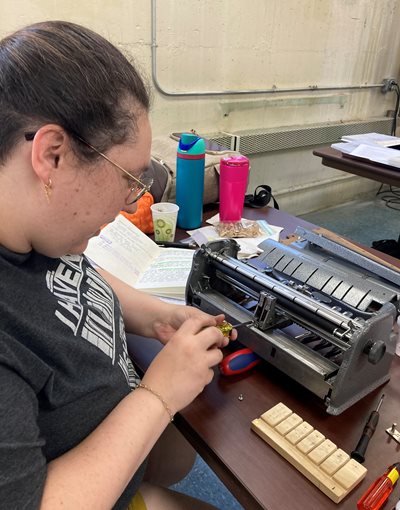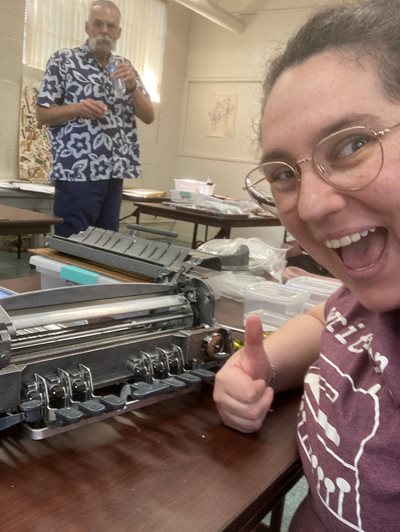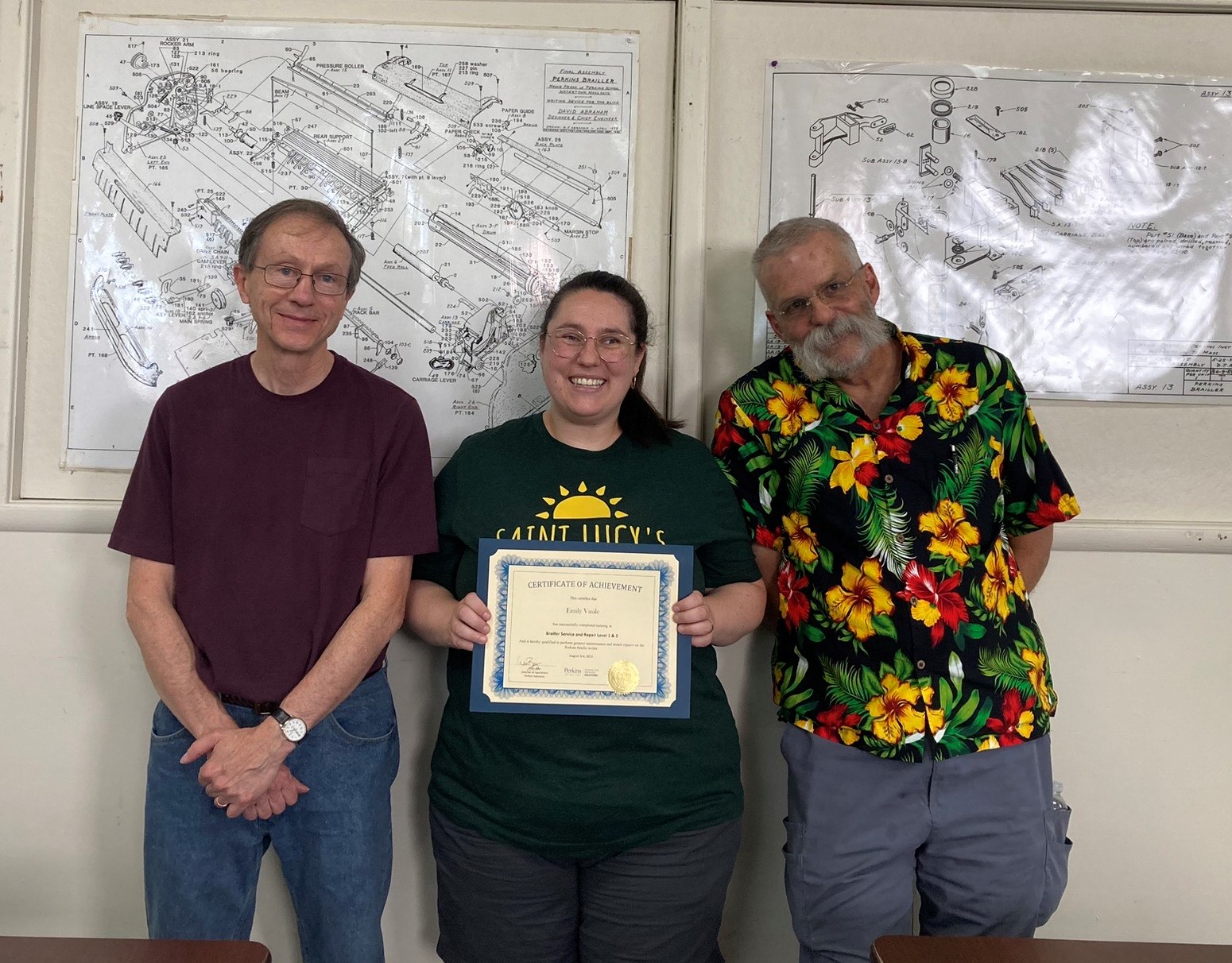Every summer, students in the Blindness and Low Vision Studies (BLVS) programs at Salus University come to campus to complete their summer residency. Depending on their program, students may end up taking any one of the following courses: Introduction to Braille, Braille Literacy, or Numeracy and Science.
 Assistant Professor Emily Vasile, MS ‘16, MAT, TVI, MS, CLVT, teaches the Introduction to Braille course to students in the University’s Orientation and Mobility (O&M) and the Low Vision Rehabilitation Programs. Students taking any of the above courses are required to rent a braille writer to complete their coursework. A “braille writer” is a machine that looks like a typewriter and uses six keys and a space bar to form letters, contractions and symbols to create braille.
Assistant Professor Emily Vasile, MS ‘16, MAT, TVI, MS, CLVT, teaches the Introduction to Braille course to students in the University’s Orientation and Mobility (O&M) and the Low Vision Rehabilitation Programs. Students taking any of the above courses are required to rent a braille writer to complete their coursework. A “braille writer” is a machine that looks like a typewriter and uses six keys and a space bar to form letters, contractions and symbols to create braille.
At the end of the summer, Vasile gets all the Braille writers back that students have rented and has to check and clean them. Any of the machines that need repairs are outsourced.
“We have to send the machines out for repairs, then wait weeks to get them back. It costs the department money,” said Vasile. “I thought, what if I just learned how to fix them and then we wouldn’t need to send them out - I could do the repairs myself.”
So that’s exactly what they did. In late July 2023, Vasile spent a week at the Perkins School for the Blind in Watertown, Massachusetts, learning how to maintain and repair the machines.
There are four levels of certification for repairing braille writers. Vasile attained a Level 2 certification, which includes learning how to take apart the machines, clean the pieces, do minor repairs, troubleshoot, and realign the machine.
 “I’ve seen these machines work and make braille, but when you take one apart and see every tiny piece, oh my goodness,” said Vasile. “You learn that every single piece has a purpose and missing one little spring means the difference in the machine working.”
“I’ve seen these machines work and make braille, but when you take one apart and see every tiny piece, oh my goodness,” said Vasile. “You learn that every single piece has a purpose and missing one little spring means the difference in the machine working.”
The BLVS department at Salus has 18 braille writers that can be rented by students. The number of machines rented out during the summer classes varies depending on the size of the classes and which students are taking which classes in any given summer.
During their week at Perkins School for the Blind, Vasile was in a class of 10 people that included two employees in the prison systems in Tennessee and Texas, a teacher, a parent and others from all walks of life. An interesting tidbit they learned from the prison system employees was that about 90 percent of the braille materials in the United States are made by inmates.
Vasile’s plan is to eventually get Level 3 certified, which would allow for major repairs.
“I think it would be really cool to include braille writer repairs into the BLVS curriculum at Salus someday,” said Vasile. “My goal next year for the Introduction to Braille class is to show students what the machine looks like when you take it apart and for them to really understand how the braille writer works. I hope that by providing this addition to the course, students will feel more confident in troubleshooting when things go wrong and can continue to produce accessible materials for their students and clients.”
